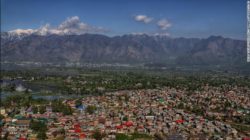NEW DELHI: India’s lower house of parliament approved a bill on Wednesday that, after several unsuccessful attempts spanning decades, is set to significantly increase the representation of women in its ranks. The proposed legislation, once enacted, will allocate one-third of the seats in India’s lower house and state assemblies for women.
However, the implementation may not occur before the national elections next year, potentially extending into the end of the decade. This development, while not immediately impacting the upcoming national elections, adds to the growing influence of Prime Minister Narendra Modi’s party in the lead-up to the polls. A resounding majority of 454 lawmakers voted in favor of the bill, with only two opposing it.
Om Birla, the parliament speaker, stated, ‘The proposal has garnered approval from more than two-thirds of the members present in the house.’ Prime Minister Modi expressed his delight and gratitude, thanking lawmakers from various political parties for their support and emphasizing the positive impact of the bill on women’s empowerment.
It’s worth noting that when Indira Gandhi assumed the role of India’s Prime Minister in 1966, she became the world’s second female head of government in a parliamentary democracy, following Sri Lanka’s Sirimavo Bandaranaike, who achieved this feat six years earlier.
India has seen two women occupy the ceremonial presidency and others take on roles as chief ministers, party leaders, and influential figures over the years. However, this progress has not translated into broader political representation. The last national election, as per government data, resulted in just 104 out of 788 Members of Parliament (MPs) in India being women, representing a mere 13 percent.
These statistics reflect a wider issue of women being underrepresented in various facets of Indian public life. Government data from the previous year showed that only slightly under a third of working-age Indian women were part of the formal labor force.
Efforts to pass a bill addressing this gender disparity have faced setbacks, with six previous attempts failing since its introduction in 1996. Some lawmakers vehemently opposed the bill, with even Mulayam Singh Yadav, then the chief minister of India’s most populous state, suggesting in 2010 that passing the bill would compel men to engage in inappropriate behavior toward their female colleagues in parliament.
The proposed bill seeks a constitutional amendment to establish a one-third quota reserved for women, requiring a two-thirds majority in both houses of parliament for approval. Passage through the upper house is expected to be smooth due to broad political support.
However, the quota’s implementation is contingent on India redrawing its electoral boundaries, a task involving a national census for its 1.4 billion population. The last census, originally scheduled for 2021, was indefinitely postponed due to the COVID-19 pandemic. Jagdeep S. Chhokar, co-founder of the civil society group Association for Democratic Reforms, emphasized the complexity of this process, estimating it would take at least two to three years, if not longer, thereby delaying implementation until around 2026-27.
Sonia Gandhi of the opposition Congress party expressed support for the bill but urged revisions to expedite its implementation. She argued that immediate enactment was not only necessary but also achievable, and any delay would be unjust to women.
Several Asian countries, including India’s neighbors Nepal and Bangladesh, have legislation mandating a minimum representation of women in national parliament. According to World Bank data from last year, only four Asian nations—Malaysia, Japan, Sri Lanka, and the Maldives—have a lower proportion of women MPs than India.
Prime Minister Narendra Modi’s Bharatiya Janata Party (BJP), expected to perform well in the upcoming elections and secure his third term, already enjoys substantial support among women. An exit poll conducted by India Today after the 2019 election found that 46 percent of Indian women voted for the BJP and its coalition allies, surpassing the 44 percent of male voters.
Source: AFP










